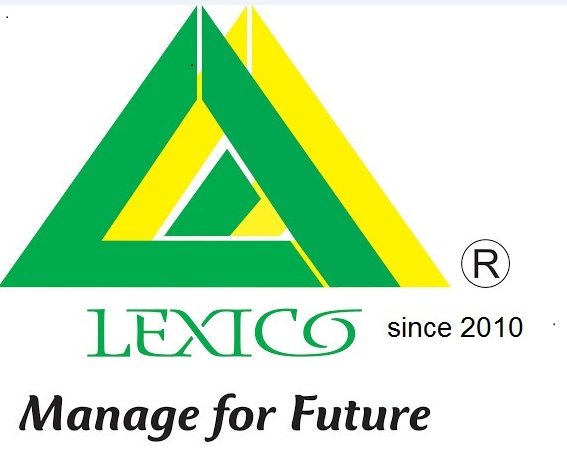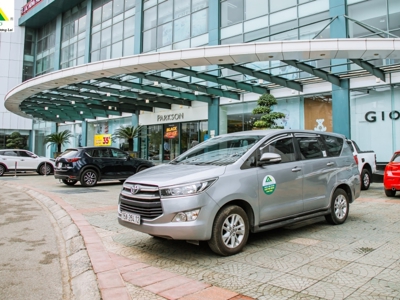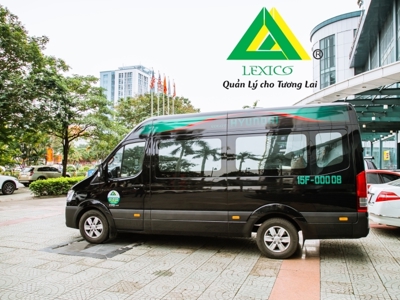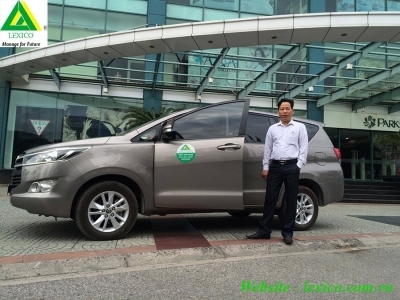
Situations and solutions to improve the quality of apartments in Hai Phong city
- The Current Status of Apartment Development and Management Company Models in Hai Phong
In recent years, along with the rapid urbanization process, many cities have seen an increase in high-end apartment buildings and high-rise office buildings. Hai Phong City is no exception to this trend. According to statistics from the Hai Phong Department of Construction, by the end of 2016, the city had nearly 20 high-rise buildings with 9 floors or more, and two of the tallest buildings in Hai Phong City had over 19 floors. There are also 6 buildings with floors ranging from 9 to 16, including hotels and office buildings, mostly built to serve resettlement and land clearance projects.
Currently, apartments are becoming a new trend for modern and dynamic life in the coastal city. However, the demand for apartments is still in the development phase and growing slowly. The city continues to focus on improving old apartments, as stated by the Party Secretary and Chairman of the City People's Council, Le Van Thanh, in a meeting on December 8, 2016. He proposed that the city government focus on rebuilding deteriorated old apartments and construct new 15-20 floor buildings to meet the housing needs of residents and facilitate land clearance for the city's major projects.
With the increasing living standards, apartment complexes must meet the diverse needs of residents, including the quality of the living environment, public safety, cultural needs, and community interaction. In addition to the well-equipped apartments, the public spaces within the apartment buildings also play an important role. Organizing such functional public spaces requires specific research to ensure that they are scientifically sound, comply with building codes, and are suitable for the general development trends, ethnic customs, and other natural factors unique to Vietnam.
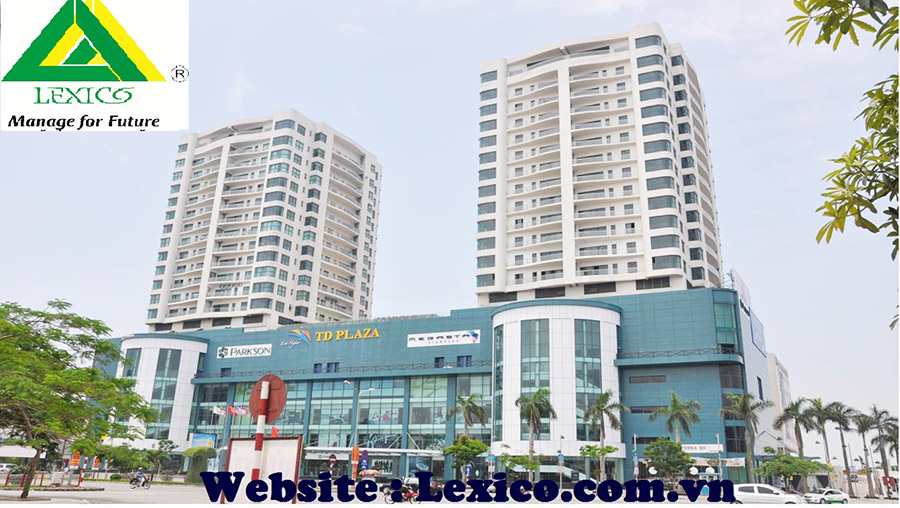
A modern high-rise building, theoretically, must ensure a closed space not only within each independent apartment but also require the completeness of the entire building. The lives of residents in the building, besides the time spent on social activities, are closely tied to their apartments as well as public functional spaces such as static traffic areas, storage facilities, and retail systems.
With the increasing demand for social development, personal transportation means are no longer just bicycles and motorbikes but also cars, requiring additional space for these vehicles in high-end residential buildings and office towers.
The inevitable trend is for modern high-rise residential buildings to keep rising. The average apartment size ranges from 40-80 square meters, while luxury apartments can be as large as 120-250 square meters or even more. Due to advancements in construction technology, the typical floor layout has become larger, requiring a corresponding increase in transportation facilities, including an adequate number of staircases (for fire safety and evacuation purposes).
Utilizing the depth of the foundation to build underground floors for static traffic, storage, and other technical infrastructure of the building needs to be carefully planned and organized.
An apartment's waste collection system is indispensable. Residents can use horizontal traffic on each floor to bring waste to a centralized collection point at a suitable location, from where it is transported using urban sanitation vehicles.
As living standards rise, after work, people not only need rest within their apartments but also seek social interaction, cultural activities, sports, and relaxation. Therefore, researching types of public functional spaces attached to residential buildings in major urban areas is a necessary direction. Simultaneously, appropriate regulations, management bodies, and operating methods must be established.
However, currently, high-rise residential buildings have only been developed to provide housing in terms of quantity, while management work has been neglected, and in some cases, completely ignored. Regulations on the management and use of high-rise buildings have not been studied or issued to match practical requirements. Therefore, during usage, residents often violate government regulations on apartment building management, leading to a worsening of urban aesthetics, reduced building lifespan, and increasingly severe social issues among residents, with many unresolved conflicts persisting.
2. Evaluation of the Current Quality of Apartment Building Management Services in Hai Phong
The survey conducted by the author in 2016 on the quality of apartment building management services in Hai Phong revealed that the current service quality remains low, with several service quality indicators rated poorly by residents. The current service provision process involves many steps, resulting in wasted time and difficulties for residents.
The attitude of customer service, technical-operation, sanitation-security staff was assessed as unfriendly and lacking enthusiasm in service delivery and support. The level of professionalism and skills of customer service, technical-operation, and sanitation-security staff were rated as insufficient during service delivery.
Below is the evaluation result from customers regarding several management quality indicators at apartment buildings in Hai Phong (Chart 1). Most customers rated the service management quality at newly built apartment buildings as average, with scores mostly ranging from 3 to 4. Only two services were rated as good: security management and beverage supply management.
Chart 1: Customer evaluation of the quality of management services at apartment buildings in Hai Phong

Most customers rated the service management quality at new apartment complexes as fairly good, with the majority of ratings falling between 3 and 4 points. Only two services were rated as good: security management and beverage supply management, with respective scores of 4.0 and 4.2. Thus, although no management services were rated as average, poor, or very poor, only a few were rated as good or very good by customers.
Chart 2: Residents' evaluation of management staff at apartment complexes

Residents of apartment complexes rated the service attitude of staff working in these buildings as not very high. Most of the criteria were rated as fairly good. However, the criterion "Attentively listening to residents' opinions" was rated as average.
Contents of Building Management
Chart 3: Survey results from managers and staff

The survey results indicate that 100% of companies implement building management design and provision and conduct management inspections. However, only 80.56% of companies develop building management strategies, and even fewer—68.06%—establish building management quality standards (Chart 3). Despite the critical necessity of developing management strategies in the building management business, 19.44% of companies have yet to implement them, and 31.94% have not yet developed quality management standards. This highlights a lack of professionalism among building management businesses.
Only 50% of companies that have building management strategies set general objectives, 80.56% identify customer needs and demand characteristics, and 62.5% develop management characteristics to meet customer needs. Therefore, while some companies have strategies, not all fully implement strategic business development activities.
Level of compliance with service management standards based on customer surveys
Chart 4: Evaluation of service management compliance levels

Survey results show that building management provides services but has not met the standard for all services. Only a few services have performed well compared to the standards, such as cleaning, security, guarding, entrance doors, and landscaping (plant care). These services meet over 50% of the quality standard. Only 22.22% meet the standard for beverage services, 27.78% for parking services, and 30.26% for repair services (Chart 4). None of the services meet the 100% standard. This indicates that the standards for services and the management of these services need to be reconsidered. This is also the reason why customers are not satisfied and have unmet expectations.
Forms of Quality Control in Building Management Services
40% of companies apply internal service quality control systems, 33% use feedback systems from employees, and only 27% apply customer feedback systems. The customer feedback system is the most objective and accurate feedback system, but it is used by very few companies.
3. Some Solutions to Improve the Quality of Building Management Services in Hai Phong
Firstly, improve the management process of residential buildings. Specifically, it is necessary to:
-
Improve the management of departments to enhance employees' professional skills and management quality, thus increasing customer satisfaction. To achieve this, it is necessary to develop a standard management process for the buildings.
-
Improve the customer management process for residents: monitor and support residents in their daily lives, resolve customer complaints and issues. Improve the complaint handling process; fire safety procedures; and standards for customer communication.
-
Improve the management process of services for residents in the building: electricity, water supply, cleaning, security, and other social services. Enhance information collection, gather customer feedback, and develop promotional strategies for customers to serve them with optimal satisfaction.
-
Enhance communication with staff, especially those who interact directly with customers: receptionists and building management staff are the ones who accurately capture customer information and identify issues during service provision. Communication with staff will help managers make adjustments to building management operations.
-
Establish customer management quality standards
In the near future, improving management quality to meet ISO 9000 standards should be implemented. Therefore, improving building management efficiency is also improving customer service in urban areas and high-rise buildings in Hai Phong. To achieve this, quality policies must be carefully developed, appropriate to the current situation, ensuring the goals for both the present and future. Develop current and future development goals and draft procedures and guidelines for necessary activities by the service provision department, ensuring correct personnel assignment.
Develop quality policies and objectives to provide a focus for guiding and helping businesses utilize resources to achieve the highest results.
To achieve high-quality management, in addition to setting standards, building management companies also need to implement solutions to reach the desired quality level. Developing a scientific workflow based on the principle of doing things correctly and properly from the beginning is an essential requirement in management work.
-
More focus on inspection is needed. Strengthen inspection before, during, and after service provision to ensure customer satisfaction. The inspection process should be integrated with the management provision process to ensure thoroughness and avoid missed steps. The inspection process can combine various methods. Managers need to share information with customers and staff to conduct accurate checks.
-
Building management should apply science and technology, especially in monitoring and inspection. Devices that should be invested in include: building surveillance camera systems, interactive websites for customer support, and systems to collect customer feedback.
-
Second, improving the quality of human resources in managing apartment complexes.
The management company of the apartment complex must recognize that the quality of human resources determines the quality of building management services. To have a quality workforce providing high-quality services, the management company must focus on:
-
Recruitment: A scientific recruitment process must be developed. Management must establish requirements for each position, and skills must be thoroughly checked during recruitment to ensure that employees have the appropriate qualifications for the job.
-
Training: Similar to other industries, customer management jobs are constantly evolving due to technology, methods, and tools used. Training should not only focus on professional skills but also on soft skills such as customer communication, problem-solving, and appropriate behavior.
-
Employee benefits: The wages for direct employees are still low, so management should consider increasing salaries and bonuses when employees perform well. There should be a bonus system issued quarterly and monthly for all employees to motivate them. Additionally, strict disciplinary measures such as salary deductions or withholding bonuses for not meeting work standards should be implemented. Besides salary, management should also offer welfare benefits like travel, insurance, sick leave, maternity benefits, etc., to ensure employee loyalty to the company.
-
Third, solutions for managing technical infrastructure.
The current technical infrastructure of the building still has many limitations compared to residents' needs. The management company needs to implement solutions to enhance technical infrastructure, such as:
-
Expanding parking areas: The building can collaborate with external units to arrange parking spaces for residents to avoid current issues. Investing in smart parking systems will help avoid congestion and ensure transparency in fee collection.
-
Investing in modern tools: For tasks like repairing electricity, water, elevators, and cleaning.
-
Installing card access systems: To ensure the safety of residents and control who enters and exits the building.
-
Regularly updating tools and equipment: For customer service and improving service activities.
-
Expanding amenities: For example, adding a gym and offering a variety of food and drink options to ensure that residents' needs are met.
-
Reducing electricity costs: Reorganizing technical management processes, such as ensuring regular maintenance of the air conditioning system to prevent excessive electricity use, replacing compact fluorescent bulbs with LED lights. Implementing seasonal and scheduled lighting control, and encouraging solar energy systems to replace traditional electricity use for public lighting.
-
Maintaining technical systems: Many critical devices in the building need regular maintenance. Failure to do so will lead to expensive repairs and affect the building’s service quality.
-
Reducing outsourcing costs: For services like security, cleaning, and landscaping. Careful consideration must be given to the outsourcing of these services to avoid waste and ensure safety and quality of service.
-
Focus on employee management.
Regularly enhance management skills for each employee and department, establish working processes with monitoring tasks, and standard reporting methods. Assign employees additional tasks to increase autonomy and reduce personnel costs.
This article was published in the Journal of the Information and Theory Agency of the Ministry of Industry and Trade [Issue 2 - February 2017].
References:
- Hai Phong City Statistics Department (2016). Report on the socio-economic situation in 2016, Hai Phong City, December 22, 2016.
- Hai Phong City Department of Construction (2016). Report on the results of activities in 2016 and the direction, tasks for 2017.
- Hai Phong Real Estate Association (2016). Report on the real estate situation in 2016 in Hai Phong City.
- Lê Va Xi (2016). Some measures to improve the efficiency of managing the TD Plaza building - Hai Phong, Master's thesis, Hai Phong University.
Article Submission Date: January 16, 2017
Review and Revision Date: January 26, 2017
Date Accepted for Publication: February 13, 2017
Author Information:
- Ths. Lê Va Xi
Hai Phong Economic Zone Management Board
Email: levaxi@yahoo.com - PGS. Ts. Trương Đình Chiến
National Economics University


